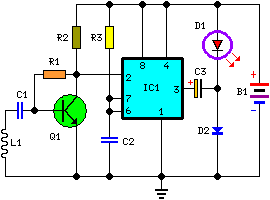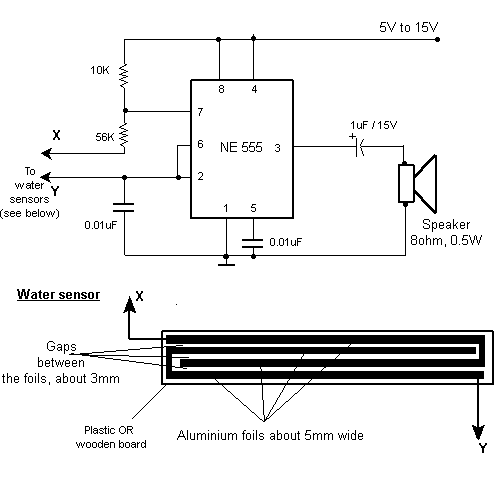
Cellular Phone Calling Detector Circuit Schematic

The circuit flashes an LED when detecting an incoming call and is powered by a single 1.5V cell. It is designed to detect incoming calls in a cellular phone.
This circuit utilizes a simple yet effective approach to alert users of incoming calls through visual indication. The primary components include a light-emitting diode (LED), a transistor, and a resistor, along with a power source, which in this case is a single 1.5V battery.
The operation begins when the cellular phone receives an incoming call. A small signal from the phone's circuitry is used to trigger the transistor, which acts as a switch. When the transistor is activated, it allows current to flow from the power source through the LED. The LED then lights up, providing a visual alert to the user.
The resistor is essential for limiting the current flowing through the LED, ensuring that it operates within safe parameters to prevent damage. The value of the resistor can be calculated based on the LED's forward voltage and the desired current, typically around 20 mA for standard LEDs.
In terms of layout, the circuit should be designed to minimize the distance between the components to reduce potential signal loss. Proper grounding and power supply decoupling are also critical to ensure stable operation. Additionally, the circuit can be housed in a compact enclosure to make it portable and easy to integrate with various mobile devices.
This simple circuit design provides an effective solution for users who may miss incoming calls, enhancing the usability of cellular phones.Flashes a LED when detecting an incoming call, Powered by one 1.5V cell This circuit was designed to detect when a call is incoming in a cellular phone (e.. 🔗 External reference
This circuit utilizes a simple yet effective approach to alert users of incoming calls through visual indication. The primary components include a light-emitting diode (LED), a transistor, and a resistor, along with a power source, which in this case is a single 1.5V battery.
The operation begins when the cellular phone receives an incoming call. A small signal from the phone's circuitry is used to trigger the transistor, which acts as a switch. When the transistor is activated, it allows current to flow from the power source through the LED. The LED then lights up, providing a visual alert to the user.
The resistor is essential for limiting the current flowing through the LED, ensuring that it operates within safe parameters to prevent damage. The value of the resistor can be calculated based on the LED's forward voltage and the desired current, typically around 20 mA for standard LEDs.
In terms of layout, the circuit should be designed to minimize the distance between the components to reduce potential signal loss. Proper grounding and power supply decoupling are also critical to ensure stable operation. Additionally, the circuit can be housed in a compact enclosure to make it portable and easy to integrate with various mobile devices.
This simple circuit design provides an effective solution for users who may miss incoming calls, enhancing the usability of cellular phones.Flashes a LED when detecting an incoming call, Powered by one 1.5V cell This circuit was designed to detect when a call is incoming in a cellular phone (e.. 🔗 External reference





